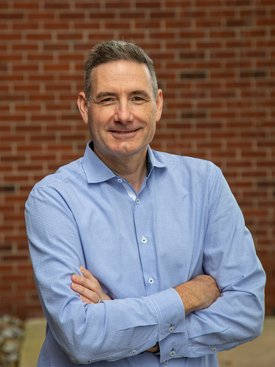Dr. Robert Moucha,
2025 Fulbright Fellow in Czechia,
Visiting Lecturer at the IGP

In the Autumn / Winter semester 2025, the courses offered to the students of Earth Sciences and related subjects will be joined by a full-semester course on
Geodynamics of Basins
This course is being offered as part of Rob Moucha’s Fulbright Fellowship awarded for a combined research/teaching project in September – December 2025. The primary host in Czechia is the Institute of Geophysics of the Czech Academy of Sciences where the research part of the fellowship is taking place; the Institute of Geology and Paleontology at the Faculty of Science, Charles University, hosts his course focused on principles of geodynamic evolution of sedimentary basins and their modelling.
About the Instructor
Robert Moucha is currently an Associate Professor and Director of Undergraduate Studies at the Department of Earth Sciences at Syracuse University, New York. Born in former Czechoslovakia, Rob has lived for most of his life in North America; he received his PhD degree in 2003 from the University of Toronto.
His research interests have been focused on the dynamics of the Earth’s mantle and crustal processes and their effects on the surface of our planet. Current areas of Rob’s research include: landscape evolution in response to tectonics, changes in climate and sea level; development of density models for the mantle by integrating seismic tomography and mantle convection modeling; melt generation and extraction during continental rifting; carbon cycle of the Hadean-Archean Earth; and surface deformation in response to flat-slab subduction.
About the Course
The course is recommended mainly to Master’s and PhD - level students in Earth and other physical sciences including Physical Geography or applied geoscience programs, but in general all students interested in geodynamic processes and their modelling are welcome. ERASMUS students are welcome. The language of the course in English only. Principal SIS information: 3 e-credits, 3 hours/week; code MG420P18. (On the SIS page, see Annotation and other information in English version please.)
Preliminary schedule as follows:
5PM Wednesdays (practicals, Computer room, door S01), 5PM Thursdays (lectures, PP room, door 203), at Albertov 6; first class on Thursday, Oct. 1
Recommended Prerequisites
Introductory Earth Science course, first year Physics and Calculus
Course Summary
Geodynamics of Basins provides a rigorous exploration of the physical and mechanical principles essential to geodynamic modeling of sedimentary basins. The course begins with a thorough introduction to key concepts, including properties of porous media, linear elasticity, continuum mechanics, rock compressibility, rock rheology, heat flow and basin subsidence. This foundation is further expanded through an analysis of surface processes using quantitative methods to evaluate how tectonic and climatic interactions shape Earth's landscapes.
The course will serve as a comprehensive introduction to geodynamic and landscape evolution modeling, supported by relevant case studies. Initially, an overview of sedimentary basins and their formation processes will be presented. The course will develop the thermal energy balance equation for the lithosphere, demonstrating its application to various geological scenarios. Vertical movements such as uplift, exhumation, and the concepts of isostasy and flexural strength will be explored. Mechanics of crustal and lithospheric deformation, including elastic, brittle, and viscous rheological behaviors, will be examined. The course will also address the response of rocks to applied stresses and their implications for dynamic basin-forming processes during lithospheric extension.
The course concludes with a focused introduction into landscape evolution modeling, incorporating both diffusive processes and stream power law approaches for fluvial erosion, hillslope processes, and sediment deposition. Students will analyze the feedback mechanisms between tectonic activity and surface processes using numerical modeling.
Students will gain practical experience with numerical modeling through hands-on exercises using MATLAB and Python, enabling them to calculate and visualize temperature evolution, fault dynamics, basin subsidence, and surface erosion and deposition across various tectonic scenarios.
Learning Outcomes
At the successful conclusion of this course, students will be able to:
- Quantify and visualize stress and strain fields in elastic and plastic materials.
- Compare and apply elastic, viscous, and visco-elastic rheological models to mantle and lithosphere deformation.
- Define, differentiate, and calculate uplift, subsidence, burial, exhumation, and denudation in simple tectonic settings.
- Apply local and regional isostasy to predict surface changes resulting from erosion and sediment loading.
- Use the McKenzie rift model to determine stretching factors and forecast tectonic, thermal, and isostatic subsidence.
- Describe the geomorphic components of landscape evolution modeling, including Hack’s law, channel steepness and concavity.
- Differentiate between detachment-limited and transport-limited models of fluvial erosion.
- Critically evaluate limitations of numerical models in representing geologic processes.
Grading will be based on assignments that will include a mixture of traditional problems and MATLAB/Python exercises (codes will be provided). Final project will consist of a short paper on a basin of your choice (list will be provided).
Recommended Textbooks
All relevant material will be provided or will be available via library.
- Basin Analysis: Principles and Application (2nd or 3rd), by Phillip A. Allen and John R. Allen, 2005 or 2013, Wiley-Blackwell
- Physical Principles of Sedimentary Basin Analysis, by Magnus Wangen, 2010, Cambridge University Press.
- Introduction to Numerical Geodynamic Modeling (1st or 2nd ed.) by Taras Gerya, 2010 or 2019, Cambridge University Press.
For further inquiries write to: ulicny@ig.cas.cz





















